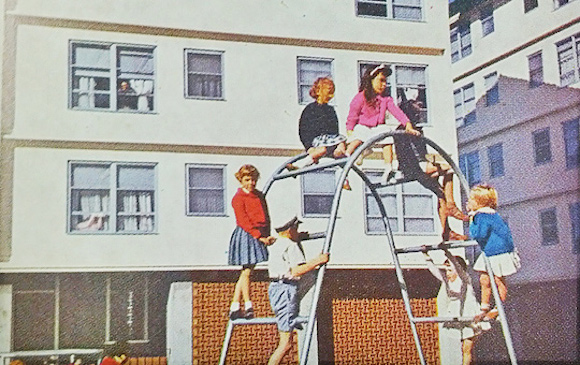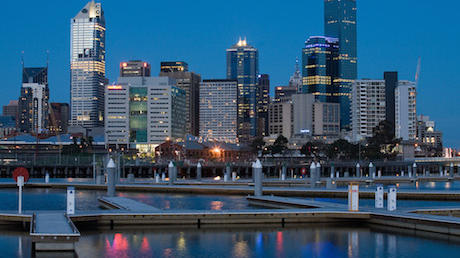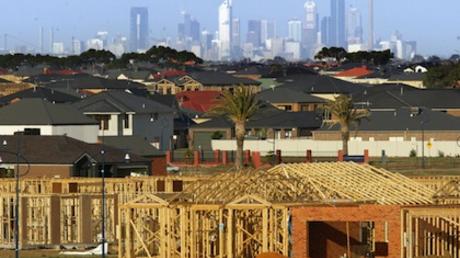
It’s sometimes difficult to be positive about planning in Melbourne, but one of the good aspects of the city's latest strategic vision Plan Melbourne - albeit, a baby step - is a greater recognition of how housing and employment policy might be linked to land use policy.
In the past, housing policy has generally been dumbed-down to focus almost exclusively on housing supply as an answer to affordability, no matter where it is. Social housing - affordable rental housing which might be owned by the state or might be owned by the non-profit sector - accounts for only three to four per cent of Melbourne's housing stock, which is much lower than in other OECD nations. So Australia is reliant on the private sector for most housing, whether it is for rent or ownership.
As the report of the Ministerial Advisory Committee to Plan Melbourne made clear, there is no part of metropolitan Melbourne where the median price or rent of housing is affordable - less than 30 per cent of gross household income - to the poorest 50 per cent of households. This means that at least half of households are locked out of affordable housing.
As distinct from "Not In My Back Yard", "Quality In My Back Yard" provides affordable housing that is built to a higher environmental and social standard.
This housing affordability failure has huge impacts on Melbourne’s liveability, productivity, and environmental sustainability. It means that families have been forced beyond where it is viable to use public transport, far from where most jobs and services are located. These people aren’t getting the housing they’d choose, as there is unmet demand for larger and more affordable apartments and townhouses in inner and middle suburbs, particularly near train stations and tram lines.
The good news is that innovation in affordable housing could lead to a lot of jobs being created. Housing needs to be planned, designed, financed, constructed, sold or rented, repaired, and renewed. If we find new ways of doing this in an affordable manner, we could create innovation for domestic consumption and export of housing, at the same time creating jobs in the knowledge economy.
"Getting To Yes" is an innovative research project in which I’ve been involved, one that is funded by developers, the University of Melbourne, and local and state government. Our research team - not only planners, but also designers and property researchers - has been working with these organisations and many others, carrying out a number of projects involving surveys, inter-disciplinary studios, and the like. One of the things we found out from our survey of developers, planners, and social housing providers is that there isn’t much knowledge about good practices in similarly economically booming cities with similar planning regimes. We therefore conducted a study tour of three North American cities: San Francisco, Vancouver, and Portland.
Firstly, the two US cities have had a consistent federal funding stream through the low-income housing tax credit, which was introduced by Ronald Reagan in 1988. This tax credit has provided a relatively stable source of investment finance, which in turn has led to hundreds of thousands of affordable housing units.
Secondly, all three cities have much more effective strategies for capturing existing land value than Melbourne does. Through methods such as community amenity charges, density bonuses, and inclusionary zoning, they have been able to get more money from new development for affordable housing, as well as other vital social infrastructure, such as community centres, libraries, and improved public transport.
Thirdly, these cities have systems to recover additional funding through setting a base level tax rate for areas about to undergo urban renewal, accruing a proportion of the increased land value as these areas improve. This could potentially be applicable in Melbourne’s urban renewal areas such as Fishermans Bend and E-Gate. As is the case with direct development charges, a proportion of the uplift in value goes to affordable housing. This is all really quite simple!
Fourthly, local, state, and federal government recognise that land is the single largest component of housing cost in these places, and therefore have systems to provide at least some of this land at no or low cost for social and affordable housing. Particularly in Vancouver and Portland, there are clear community planning processes that link additional population to additional social infrastructure, such as community centres and schools.
Vancouver and Portland also have family friendly housing guidelines that mandate a minimum number of two and three bedroom units and have other design provisions, such as community rooms in apartments, minimum sizes, and minimum storage spaces, all of which help families that want to live in the central city.
Finally, all three cities support partnerships between charitable organisations, developers, and social housing providers to help simplify the complicated grants realms and help scale up affordable housing. We met with private developers, banks, and constructions companies in all three cities that were champions for affordable housing. They see advantages in meeting the housing needs of the majority of households, recognising that investment in social housing is particularly important when there is the potential for market slowdowns, such as the Global Financial Crisis.
As distinct from the current emphasis of "Not In My Back Yard" (NIMBY) these cities are providing "Quality In My Back Yard": affordable housing that is built to a higher environmental and social standard, lowering energy and maintenance costs in the long run. There, social housing is seen as a bridgehead for urban renewal, rather than something to be stigmatised.
The question is not what to do about affordable housing and jobs, but how to get there from where we are now. There are considerable local innovations in Melbourne in the form of design, construction, and management models. What we need to figure out is how state and local government can support the necessary industrial transformation of affordable housing to build on these innovations to deliver both good quality jobs and more affordable housing for all of Melbourne.
Carolyn Whitzman is Professor in Urban Planning at the University of Melbourne and co-editor of the forthcoming free e-book Melbourne: What Next? This article is an extract from that book, which will be available for download through the link from 13 October.




